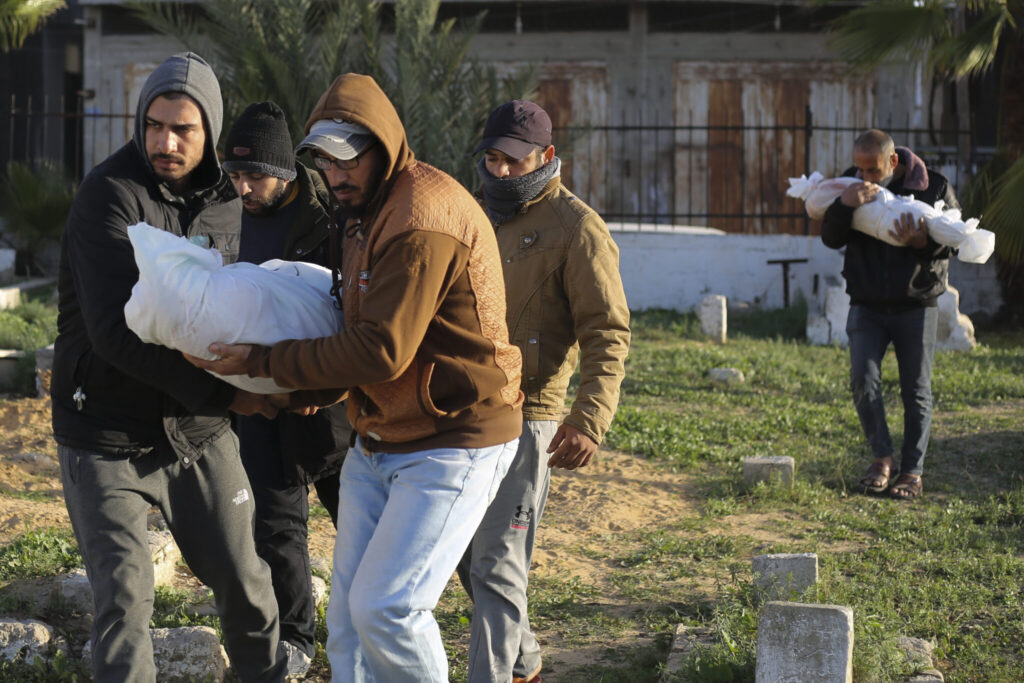Israel’s war to destroy Hamas has killed more than 20,000 Palestinians, health officials in Gaza said Friday, as Israel expanded its offensive and ordered tens of thousands more people to leave their homes. The deaths in Gaza amount to nearly 1% of the territory’s prewar population — the latest indication of the 11-week-old conflict’s staggering human toll. Israel’s aerial and ground offensive has been one of the most devastating military campaigns in modern history, displacing nearly 85% of Gaza’s 2.3 million people and leveling wide swaths of the tiny coastal enclave. More than half a million people in Gaza — a quarter of the population — are starving, according to a report Thursday from the United Nations and other agencies.
Quick Read
- Impact of Israel’s War on Gaza:
- Death Toll: Over 20,000 Palestinians, nearly 1% of prewar population.
- Displacement: Approximately 85% of Gaza’s 2.3 million people displaced.
- Destruction: Wide areas of Gaza leveled.
- Israel’s Offensive:
- Trigger: Initiated after Hamas militants’ attack on Oct. 7.
- Objective: Destruction of Hamas and liberation of hostages.
- Extent: Aerial and ground offensive causing significant casualties and damage.
- U.N. Security Council Resolution:
- Adoption: Passed a resolution for speeding up Gaza aid.
- U.S. Role: Removed call for “urgent suspension of hostilities,” abstained in the vote.
- Focus: Immediate aid delivery, creating conditions for cessation of hostilities.
- Israel’s Military Strategy:
- Target Areas: Southern Gaza, including Khan Younis.
- Evacuation Orders: Issued for several areas, hinting at ground assaults.
- Focus: Clearing out Hamas militants.
- Rising Death Toll and Hunger:
- Health Ministry Report: 20,057 deaths and over 50,000 wounded.
- Starvation: Over half a million people in Gaza facing starvation.
- Israel’s Stance: Blames Hamas for civilian casualties.
- Israeli Military Claims:
- Soldiers Killed: 139 Israeli soldiers.
- Hamas Casualties: Claims thousands of militants killed.
- Evidence: Not presented to support claims.
- Aid and Supply Crisis:
- Restrictions: Israel stopped entry of essential supplies.
- International Demands: Opening of Kerem Shalom cargo crossing.
- Aid Delivery: Hindered by Israeli strike on Palestinian side of the crossing.
- Collapse of Gaza’s Health Sector:
- Functioning Facilities: Only nine out of 36.
- Disease Surge: Increased cases of diarrhea, meningitis, skin rashes, and scabies.
The Associated Press has the story:
Gaza war’s staggering toll reaches a grim milestone: 20,000 dead
Newslooks- RAFAH, Gaza Strip (AP)
Israel’s war to destroy Hamas has killed more than 20,000 Palestinians, health officials in Gaza said Friday, as Israel expanded its offensive and ordered tens of thousands more people to leave their homes.
The deaths in Gaza amount to nearly 1% of the territory’s prewar population — the latest indication of the 11-week-old conflict’s staggering human toll.
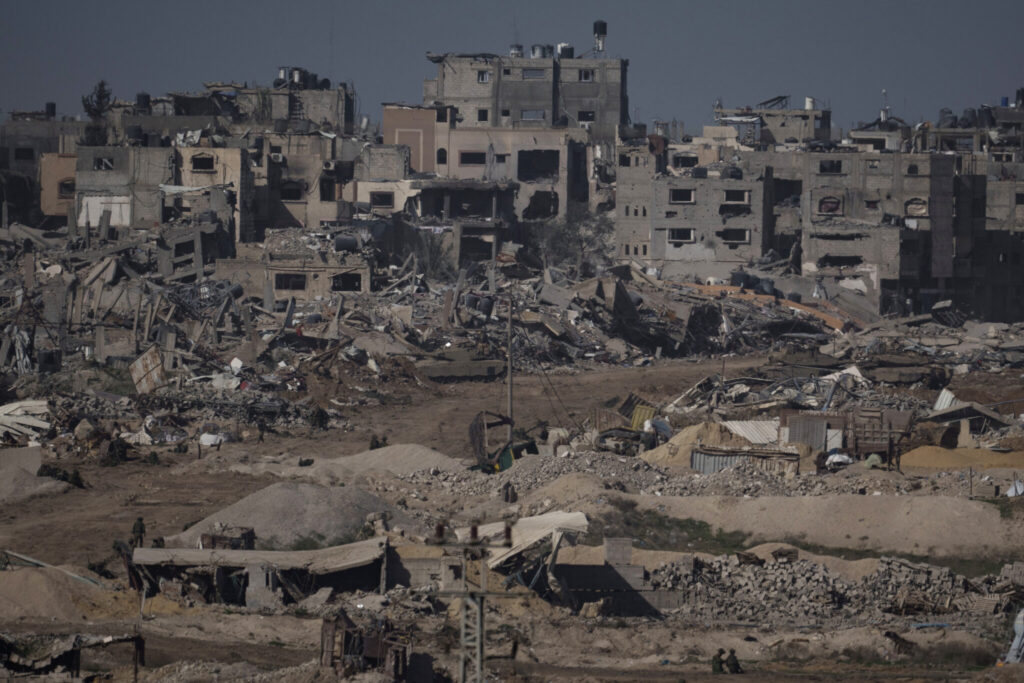
Israel’s aerial and ground offensive has been one of the most devastating military campaigns in modern history, displacing nearly 85% of Gaza’s 2.3 million people and leveling wide swaths of the tiny coastal enclave. More than half a million people in Gaza — a quarter of the population — are starving, according to a report Thursday from the United Nations and other agencies.
Israel declared war after Hamas militants stormed across the border on Oct. 7, killing some 1,200 people and taking some 240 hostages. Israel has vowed to keep up the fight until Hamas is destroyed and removed from power in Gaza and all the hostages are freed.
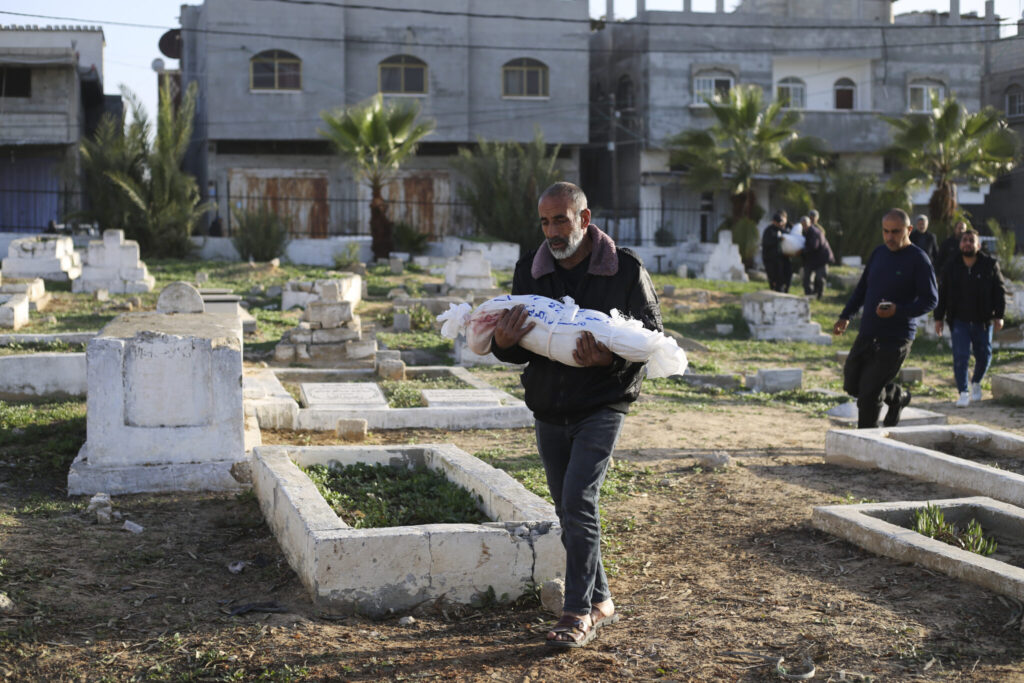
After many delays, the U.N. Security Council adopted a watered-down resolution Friday calling for immediately speeding up aid deliveries to desperate civilians in Gaza.
The United States won the removal of a tougher call for an “urgent suspension of hostilities” between Israel and Hamas. It abstained in the vote, as did Russia, which wanted the stronger language. The resolution was the first on the war to make it through the council after the U.S. vetoed two earlier ones calling for humanitarian pauses and a full cease-fire.
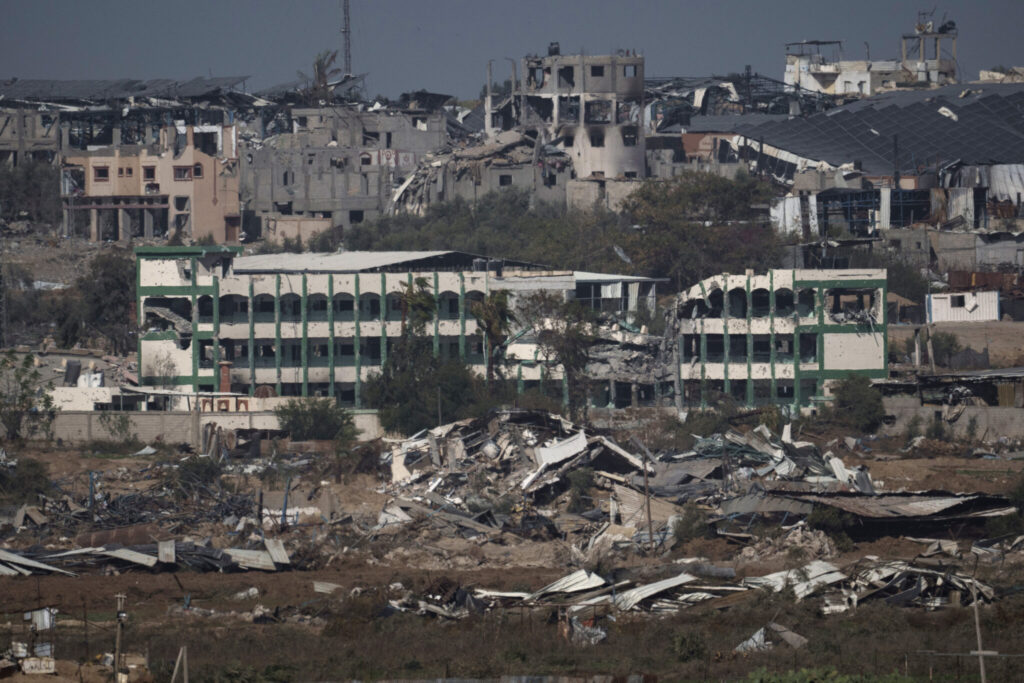
Martin Griffiths, the U.N. humanitarian affairs chief, lamented the world’s inaction.
“That such a brutal conflict has been allowed to continue and for this long — despite the widespread condemnation, the physical and mental toll and the massive destruction — is an indelible stain on our collective conscience,” he wrote on the social media platform X.
ISRAEL VOWS TO KEEP UP PRESSURE ON HAMAS
The U.S. also negotiated the removal of language that would have given the U.N. authority to inspect aid going into Gaza, something Israel says it must do to ensure material does not reach Hamas.
Israel’s ambassador to the U.N., Gilad Erdan, thanked the U.S. for its support and sharply criticized the U.N. for its failure to condemn Hamas’ Oct. 7 attacks. The U.S. vetoed a resolution in October that would have included a condemnation because it didn’t also underline Israel’s right to self-defense.
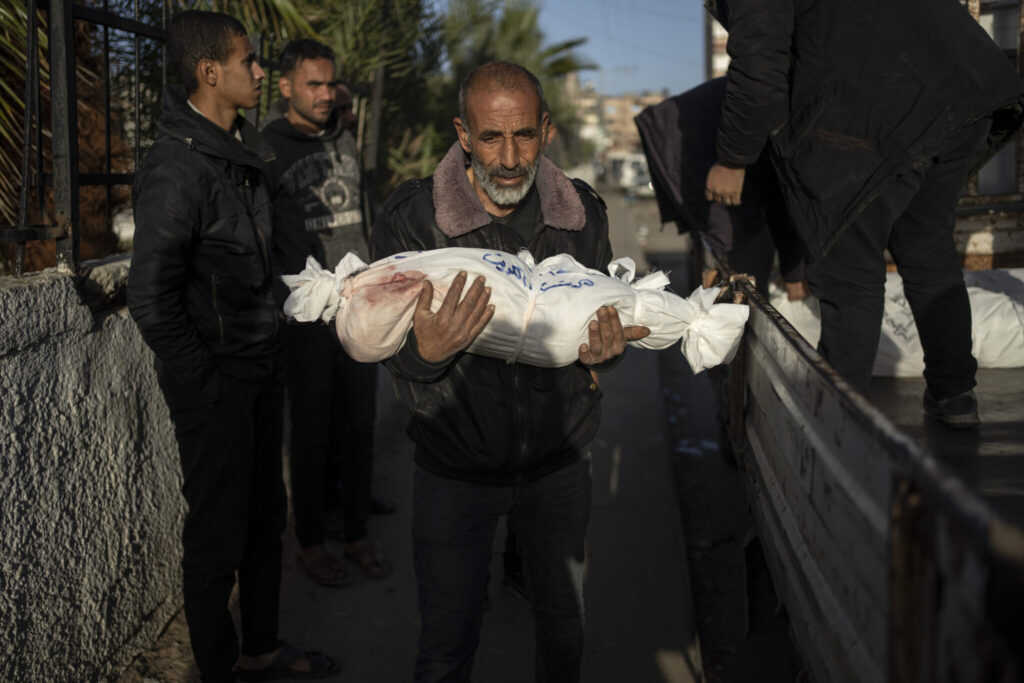
Israel, shielded by the United States, has resisted international pressure to scale back its offensive. The military has said that months of fighting lie ahead in southern Gaza, an area packed with the vast majority of the enclave’s 2.3 million people, many of whom were ordered to flee combat in the north earlier in the war.
Evacuation orders have pushed displaced civilians into ever-smaller areas of the south as troops focus on Khan Younis, Gaza’s second-largest city.
The military said late Thursday that it is sending more ground forces, including combat engineers, to Khan Younis to target Hamas militants above ground and in tunnels.
On Friday, it ordered tens of thousands of residents to leave their homes in Burej, an urban refugee camp, and surrounding communities in central Gaza, suggesting a ground assault there could be next.
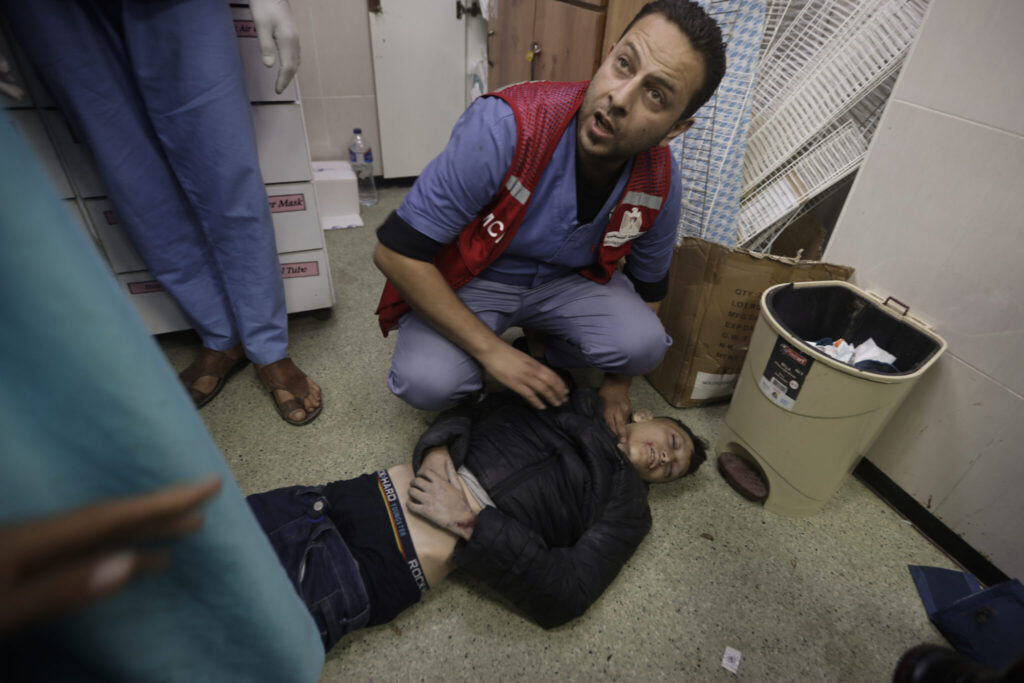
In the city of Rafah, on the border with Egypt, an airstrike on a house killed six people, according to Associated Press journalists who saw the bodies at a hospital. Among the dead were a blind man, his wife and their 4-month-old child, said the infant’s grandfather, Anwar Dhair.
Rafah is one of the few places in Gaza not under evacuation orders but has been targeted in Israeli strikes almost every day.
The air and ground campaign continued in the north, where Israel says it is in the final stages of clearing out Hamas militants.
Mustafa Abu Taha, a Palestinian farm worker, said many areas of his hard-hit Gaza City neighborhood of Shijaiyah have become inaccessible because of massive destruction from airstrikes.
“They are hitting anything moving,” he said of Israeli forces.
RISING DEATH TOLL AND HUNGER
Gaza’s Health Ministry said Friday that it has documented 20,057 deaths in the fighting and more than 50,000 wounded. It does not differentiate between combatant and civilian deaths. It has previously said that roughly two-thirds of the dead were women or minors.
Israel blames Hamas for the high civilian death toll, citing the group’s use of crowded residential areas for military purposes and its tunnels under urban areas.
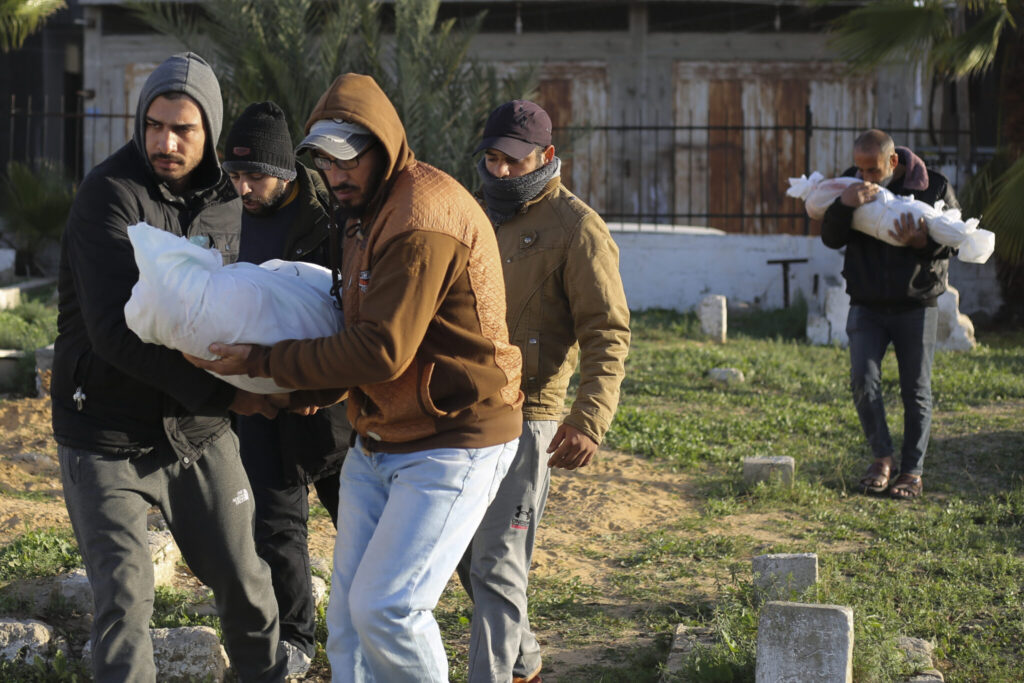
Israel’s military says 139 of its soldiers have been killed in the ground offensive. It says it has killed thousands of Hamas militants, including about 2,000 in the past three weeks, but it has not presented any evidence to back up the claim.
For most of the war, Israel also stopped entry of food, water, fuel and other supplies except for truck convoys of aid from Egypt, which cover only a fraction of the needs in Gaza.
Because of insufficient aid entering Gaza, the extent of starvation has eclipsed the near-famines of recent years in Afghanistan and Yemen, and the risk of famine is “increasing each day,” Thursday’s report said.
An Israeli military liaison officer with Gaza said there is no food shortage in Gaza, saying sufficient aid is getting through.
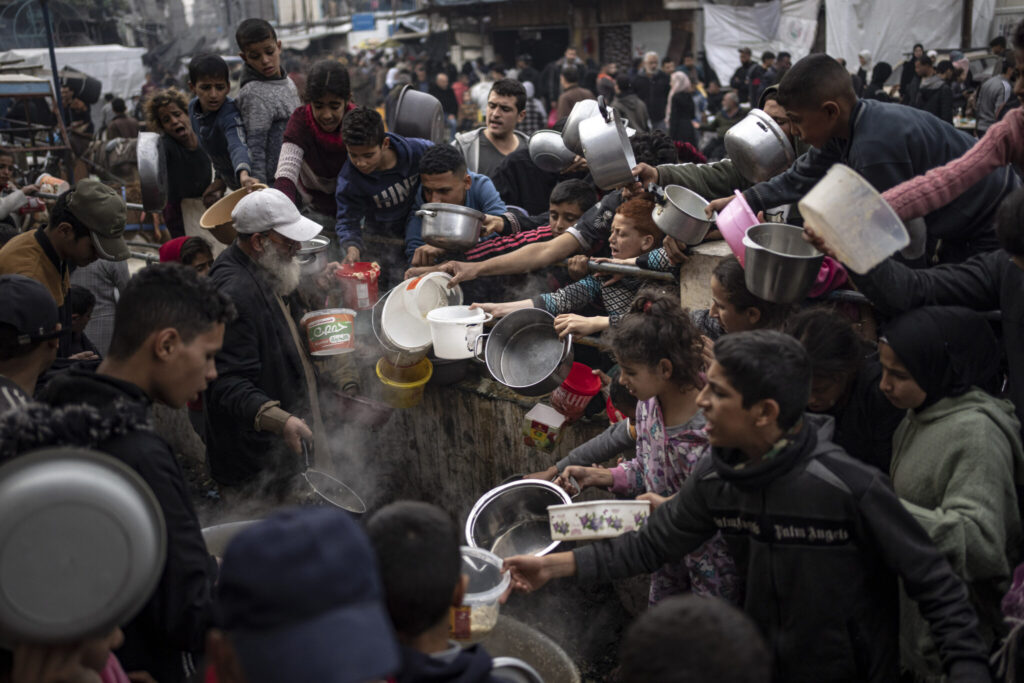
“The reserves in Gaza Strip are sufficient for the near term,” Col. Moshe Tetro said from the Kerem Shalom cargo crossing, without elaborating.
Israel opened the Kerem Shalom crossing several days ago amid international demands to increase the flow of aid. But the military on Thursday struck the Palestinian side of the crossing, killing four staffers, and the U.N. said it was unable to pick up aid there for delivery. It was not immediately known if the U.N. resumed work there Friday. The Israeli military said it was targeting militants.
The war has also pushed Gaza’s health sector into collapse.
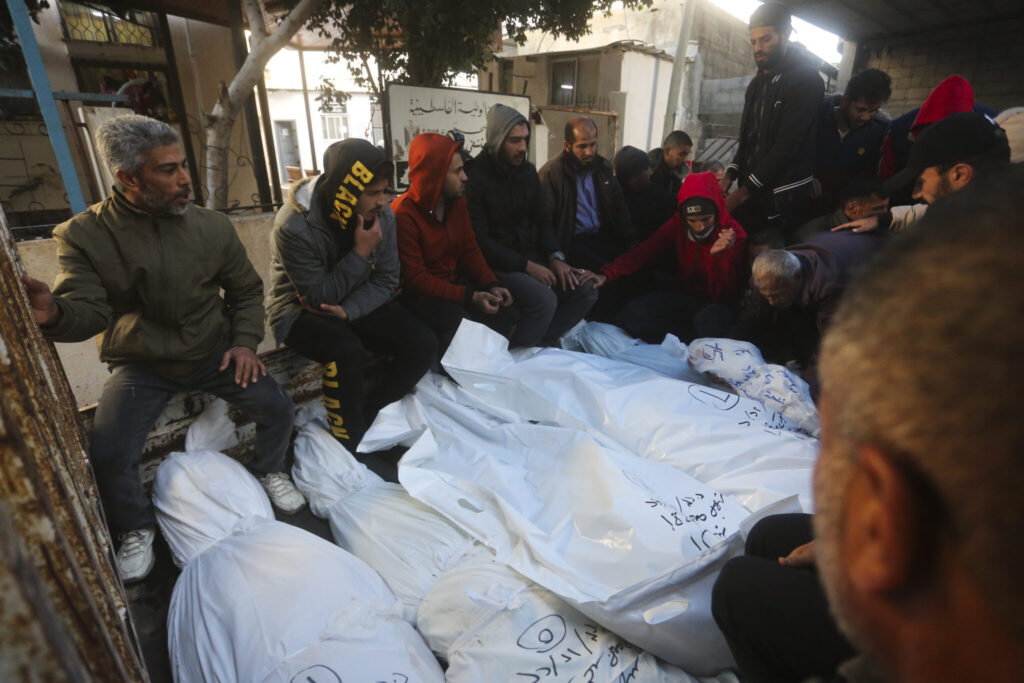
Only nine of its 36 health facilities are still partially functioning, all located in the south, according to the World Health Organization.
The agency reported soaring rates of diseases in Gaza, including a five-fold rise in diarrhea and increases in cases of meningitis, skin rashes and scabies.

